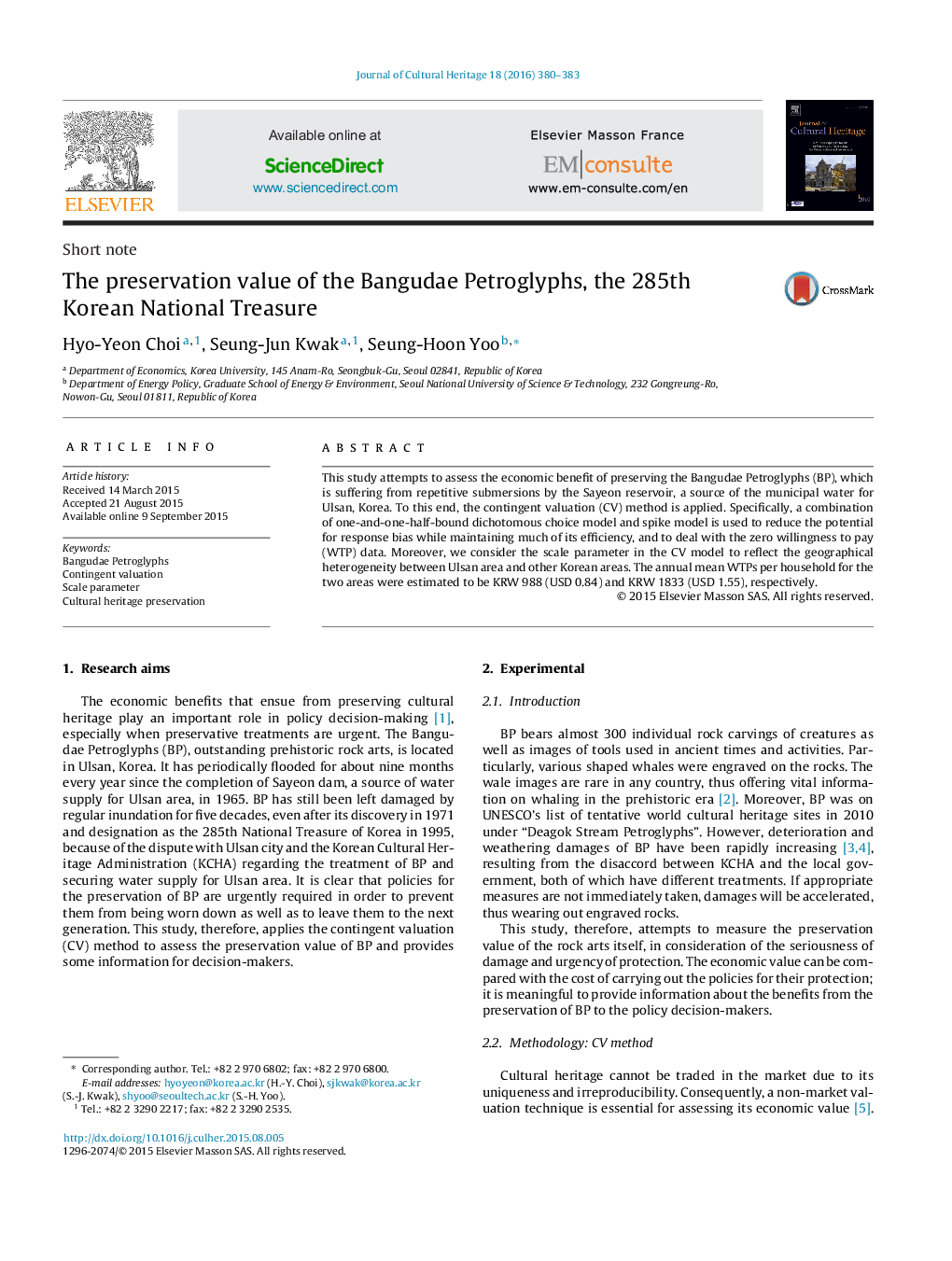| Article ID | Journal | Published Year | Pages | File Type |
|---|---|---|---|---|
| 1037907 | Journal of Cultural Heritage | 2016 | 4 Pages |
Abstract
This study attempts to assess the economic benefit of preserving the Bangudae Petroglyphs (BP), which is suffering from repetitive submersions by the Sayeon reservoir, a source of the municipal water for Ulsan, Korea. To this end, the contingent valuation (CV) method is applied. Specifically, a combination of one-and-one-half-bound dichotomous choice model and spike model is used to reduce the potential for response bias while maintaining much of its efficiency, and to deal with the zero willingness to pay (WTP) data. Moreover, we consider the scale parameter in the CV model to reflect the geographical heterogeneity between Ulsan area and other Korean areas. The annual mean WTPs per household for the two areas were estimated to be KRW 988 (USD 0.84) and KRW 1833 (USD 1.55), respectively.
Related Topics
Physical Sciences and Engineering
Chemistry
Physical and Theoretical Chemistry
Authors
Hyo-Yeon Choi, Seung-Jun Kwak, Seung-Hoon Yoo,
